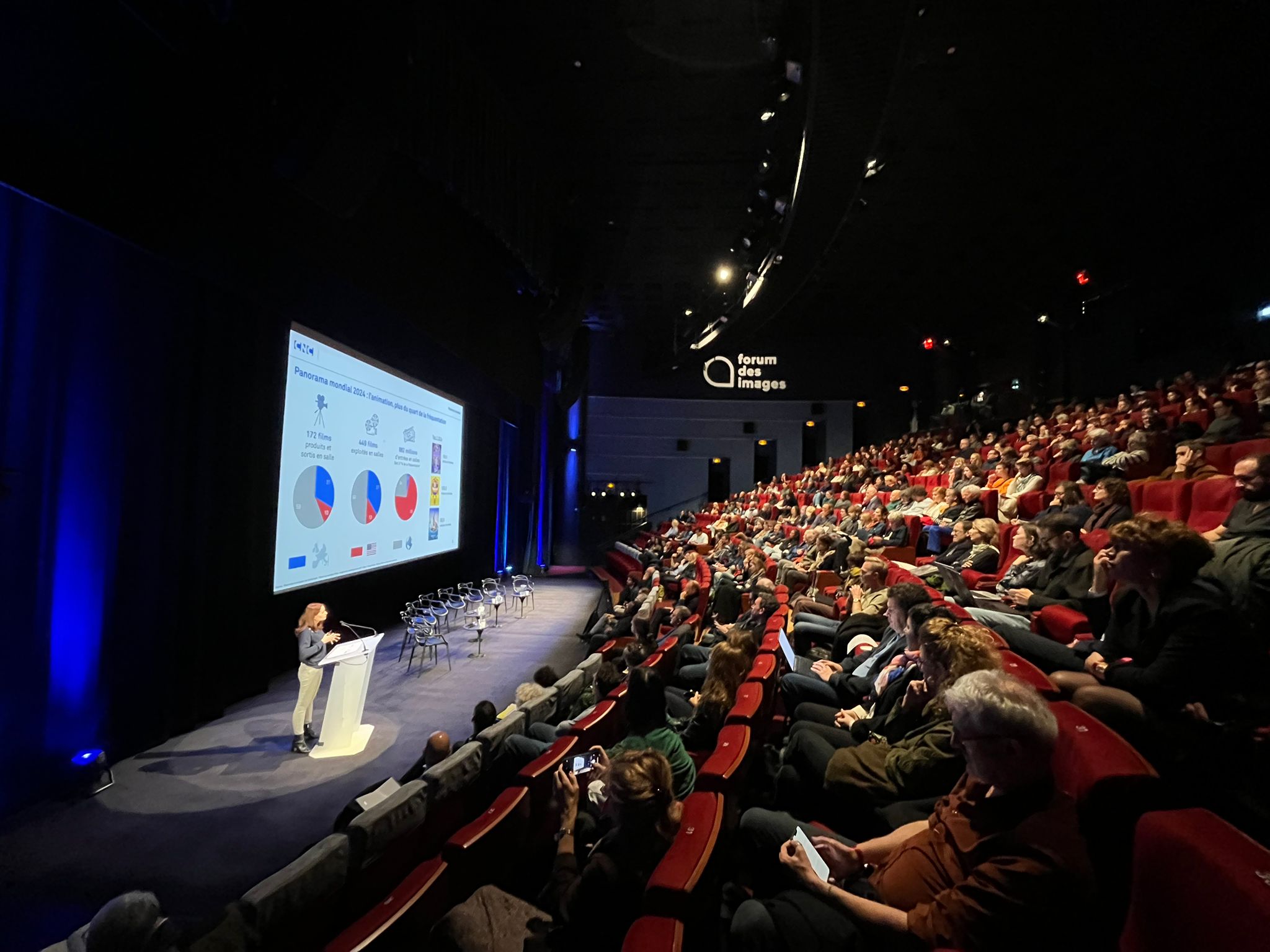Because when we talk about animation in France, we are really talking about an entire sector of the film and audiovisual industry, which is often underestimated or sidelined in favour of live action. This is despite the fact that the industry is extremely dynamic, and that French animation schools such as ESMA have acquired an international reputation.
Bringing people together to unite them is the aim behind this conference, which was held in Paris last week at the Forum des Images and focused on feature films, perhaps the most perilous form of animated film, but also the one that attracts the most media attention.
A day of meetings, discussions and debates organised by the Association Française du Cinéma d’Animation(AFCA), the AnimFrance union and the Syndicat des Producteurs Indépendants (SPI), with the participation of the CNC and the support of the Société des producteurs de cinéma et de télévision (PROCIREP), the Forum des Images and Transperfect Media.
Developing, financing and distributing: the major challenges
What did we talk about, and what emerged from this “State of the Union” for feature-length animation in France?
Firstly, that the development of animated films is built around authors and scriptwriters in a collaborative process specific to the medium.
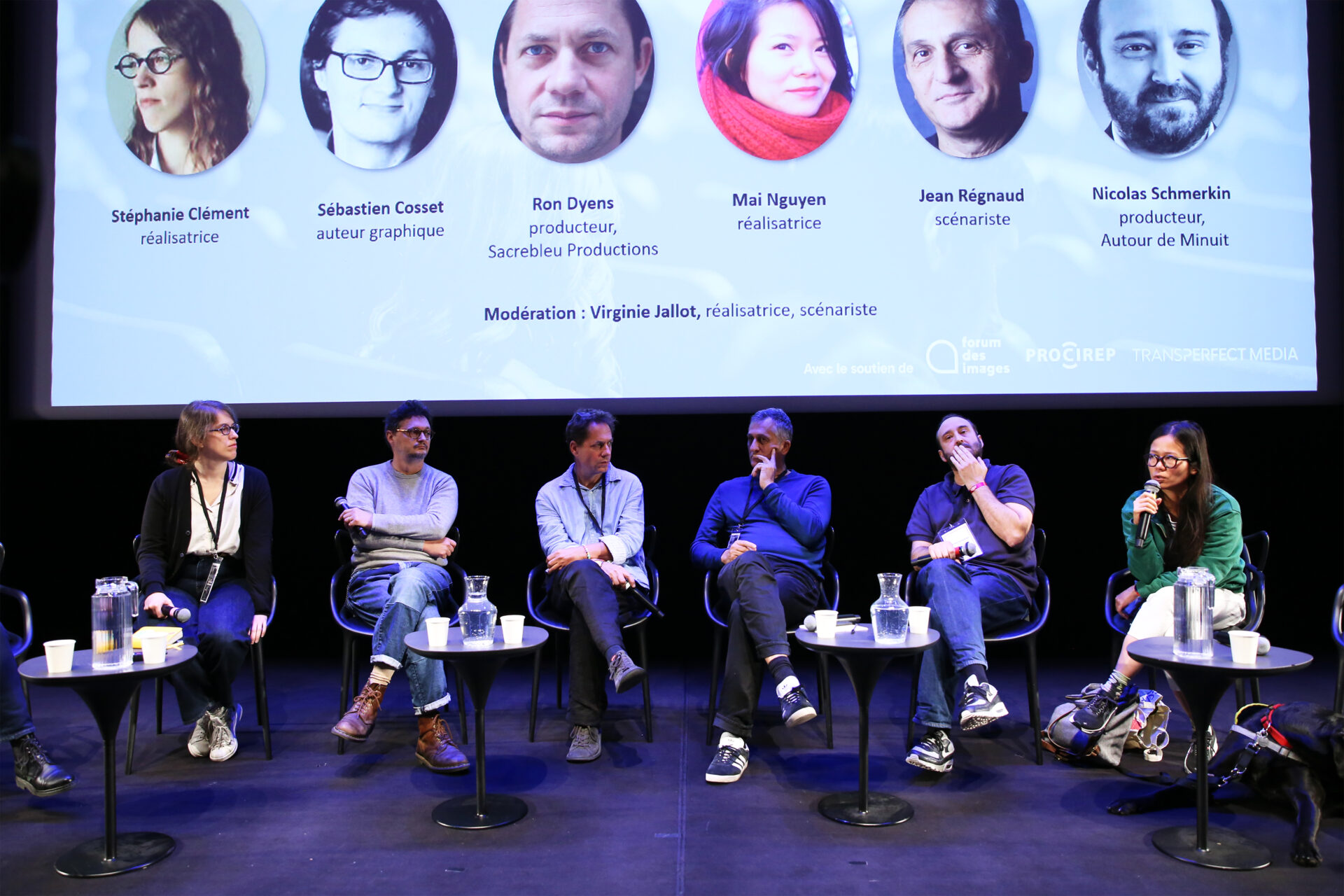
For Jean Regnaud, scriptwriter of such films as SamSam, Chien Pourri and Ernest et Célestine, “animation is special in that the writing is theoretical, and nothing is ever finalised before the animatic.
Following the project through to animatics is therefore necessary, and this represents a very different dynamic to shooting live action.”
This is an observation shared by Mai Nguyen, director of the French feature film In Waves, currently in production. “The various phases leading up to the transition from the written word to animatics are complex, and it regularly happens that things that work on paper don’t work on film. Writing – and rewriting, because in my case we had to reduce the animatic by 15 minutes – has to be a collaborative process under the sign of benevolence.”
At ESMA, the same approach is adopted for the development of the end-of-study short films. Based on a pitch put forward by the students, the teams work together on the basis of their affinity with the idea, before creating a story together, which is then translated into images by the team. This complementary approach reflects the situations that students will encounter in the professional world.
But how do you finance these developments, which often take much longer and cost much more than shooting live footage?
That’s the crux of the problem, according to Nicolas Schmerkin, producer at Autour de Minuit. For over twenty years, the producer (winner of the Oscar for best animated short with Logorama) has been developing animated shorts and features, even if the completion rate for the latter remains alarmingly low… “People often joke that you can’t make a living as an animated feature film producer. I can assure you, the profession of animated feature film developer even less so,” asserts Schmerkin. “As a producer of short films, it’s very hard to see authors getting stuck in this format because as soon as you propose a feature-length project, you’re sent back to one box: that of animation for young audiences and cartoons. As far as I know, they don’t force people coming out of FEMIS to make a comedy with Dany Boon…”.
Behind the irony, therein lies the challenge of feature-length animation: to break through the barriers associated with the medium and establish animation as an art form in its own right. ESMA students, through the various short films they develop at the end of their studies, are also confronted with this compartmentalisation when it comes to distributing films at festivals, even though many short film festivals are also open to animation, and the ESMA distribution team works on the placement of these films with rigour and precision.
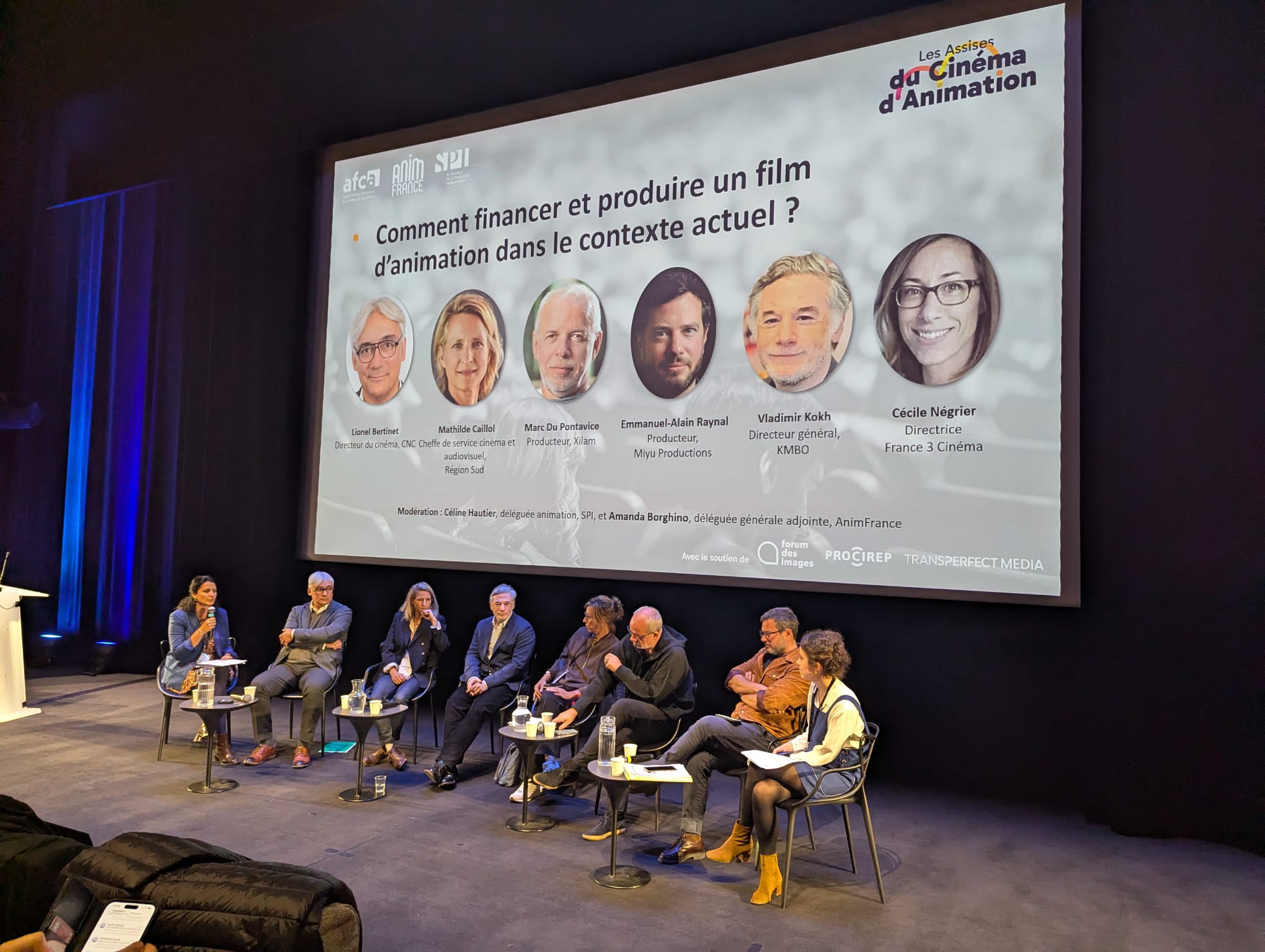
Ron Dyens (Sacrebleu Productions), winner of the Oscar for Best Animated Feature with Flow, also agrees. “In France, there’s still a block on animation for adults.
In Japan, not at all, it’s part of the culture. With globalisation, we realise that things are changing, but it’s still very slow. When we present our films to the commission [to obtain support, like that from the CNC for example, editor’s note], we have to give a lot more, educate people, and get some very violent rejections”.
This frustration is also felt by other producers. But with the recent success of Flow, Amélie et la Métaphysique des Tubes, and international productions such as KPop Demon Hunters and Demon Slayer, some are optimistic about the future. Provided that production funding continues, or even increases, and that the audience is there. To prepare for this future, students are confronted with the challenges of animation production throughout their course.
A new specialisation in production is also being prepared at ESMA, to give the best tools to those who, like Joe Azar, an alumnus who now works at TAT studios and is also an independent producer, would like to go into this field.
Distribution: How do you get people to watch animation on the big screen?
In France, Flow sold over 780,000 tickets, a phenomenal and unexpected success for a film that has won over audiences and critics alike. For UFO Distribution, this was a godsend, but it also meant a lot of hard work programming, raising awareness and distributing the film to cinemas.
Faced with the American studios, who are flooding the market with copies and monopolising the best slots, independent distributors have to fight constantly to exist and get their films seen. “This may not be obvious to the general public, but when we come up with an animated film, whatever it is, we are systematically offered MSD slots, i.e. Wednesday-Saturday-Sunday, family times”, emphasise Wild Bunch, KMBO and UFO, the three distribution companies represented on the third panel of this discussion day. And even in the case of releases aimed at young audiences, as was the case this summer with Falcon Express from TAT Studios (with whom many former students work), it’s not easy to carve out a place for yourself against the American giants.
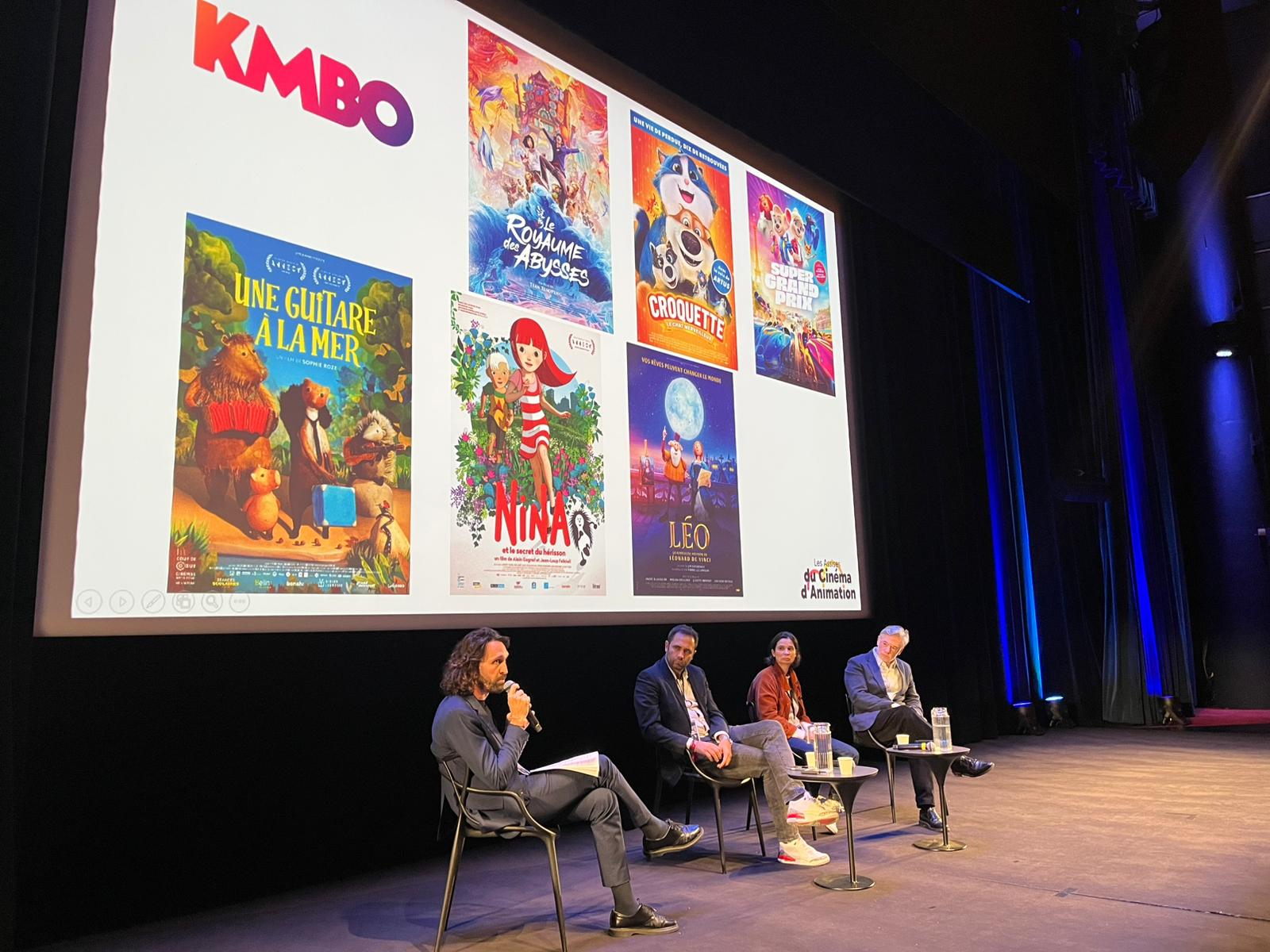
How can we break this deadlock? Through education, on the one hand, by patiently going back to exhibitors to explain that “no, it’s not a Disney cartoon”, or that “yes, it’s a film for adults, with teddy bears [referring toUnicorn Wars]”. Or by creating themed, seasonal programmes. For KMBO, Christmas has become a time when compiled programmes of short films work very well with audiences.
And finally, by learning about the success stories of Demon Slayer, the recent Ghibli films, or other films such as the feature Ne Zha 2, the biggest box-office success in the world in 2025 and the first animated film to have exceeded two billion dollars in revenue.
This inventiveness and flexibility must be built in synergy with authors and producers, and also (as far as possible) with the entire world of distribution, which is still highly competitive and increasingly unpredictable.
By the way, is there an audience for feature-length animation in France?
The vexing question deserves to be asked. For the sector, the answer is obviously yes, but it must be stressed that there is still a long way to go to build loyal audiences, as is the case in Japan. The presence at Cannes of films such as Flow, Arco and Planètes, and the recent cover story in Télérama featuring Amélie et la Métaphysique des tubes on the front page, are all part of the educational work being carried out by a large number of enthusiasts.
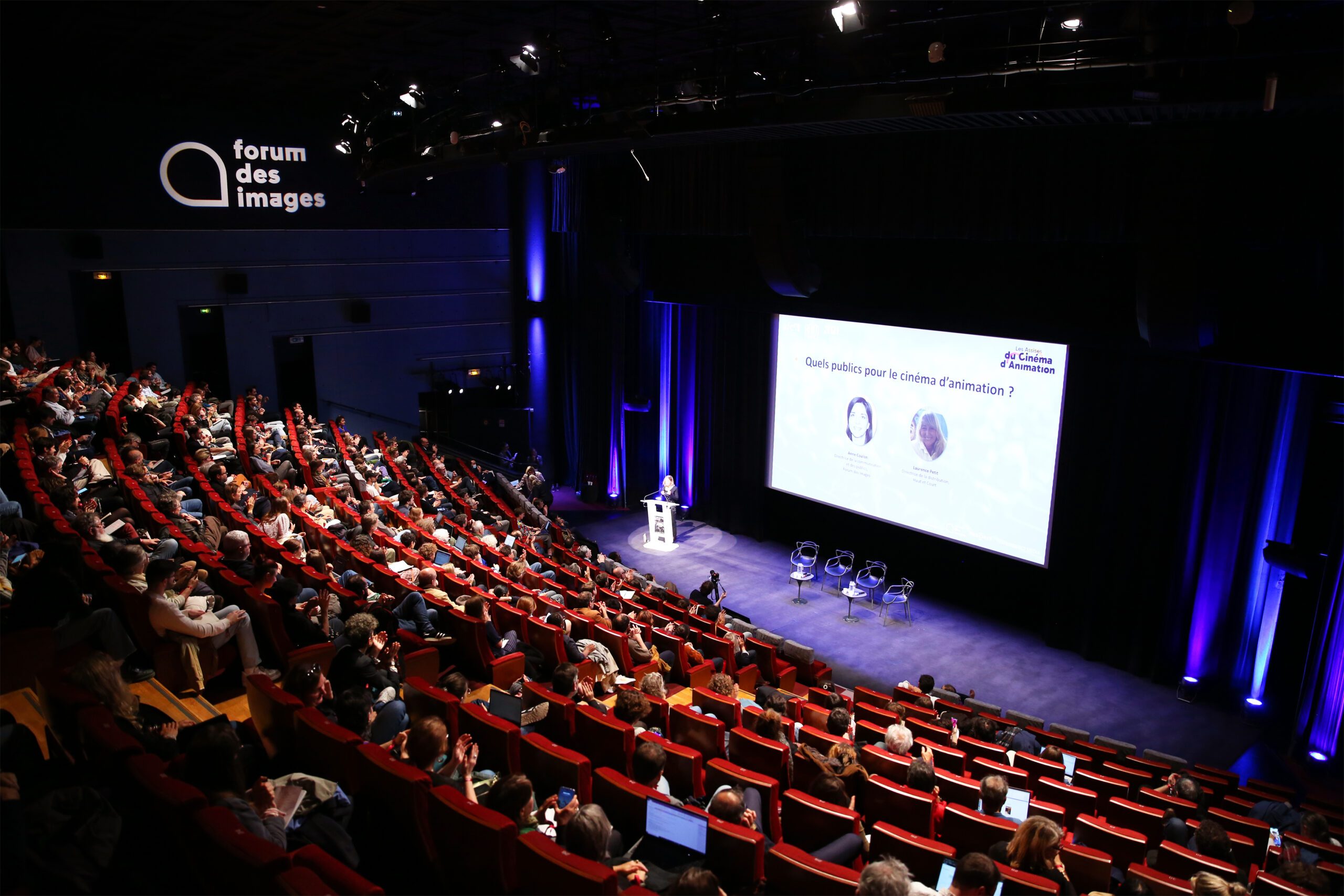
For Julien Rejl, general delegate of the Directors’ Fortnight at Cannes, it also requires a form of humility. “When you’re not familiar with an art form, you can miss out. Animation is an art form that we want to showcase at its true value, like any other type of cinema, and that we want to introduce to a wide range of film-lovers”. Alex Dudok de Wit was recruited by the festival in 2024 as a consultant.
“If we don’t educate people in this way, it’s always the same people who are highlighted in the press”, points out Perrine Quennesson, a freelance journalist.
“Pixar, Disney, Sony and the other franchises are dominating the magazine covers, and we have to fight to put journalists in front of other animated films.
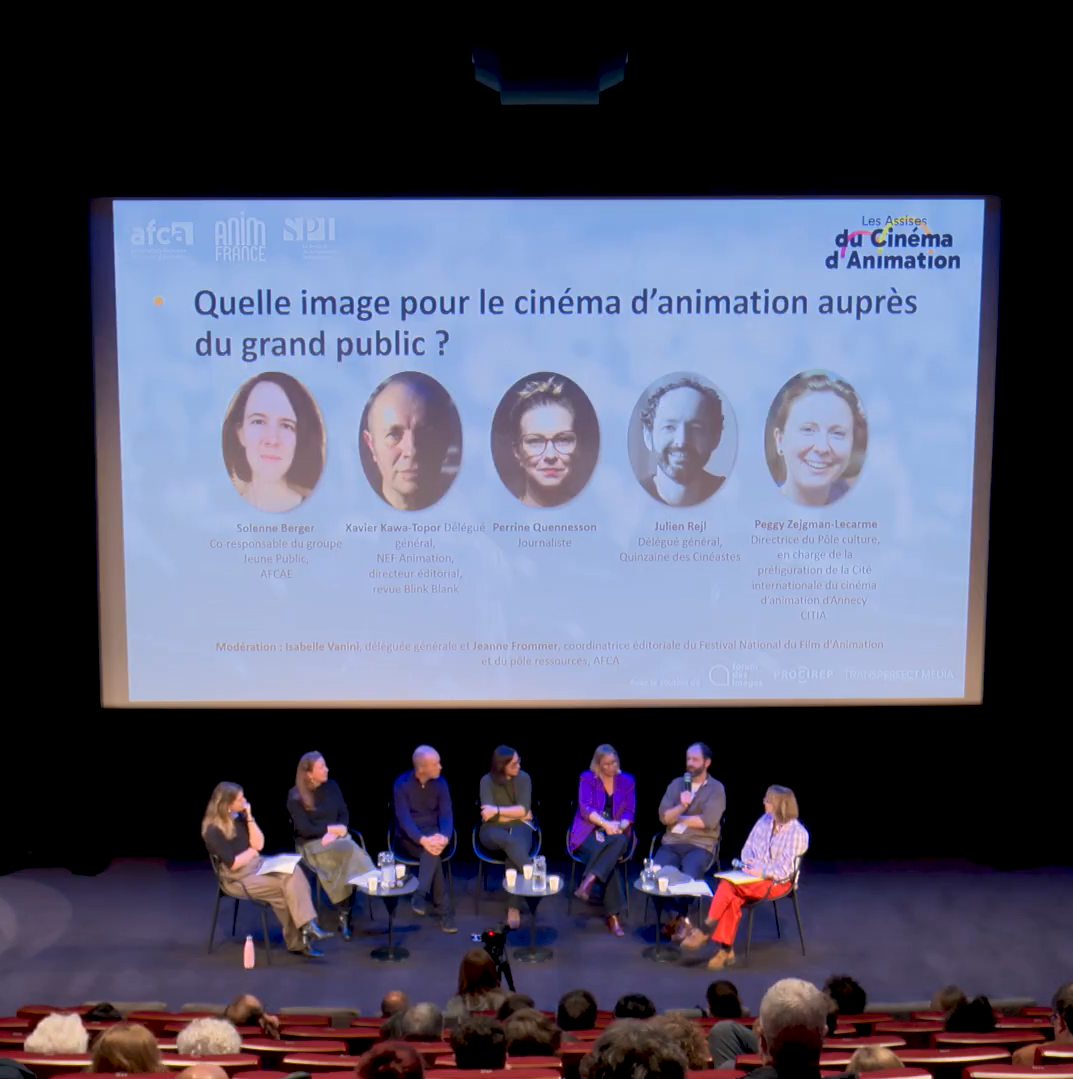
But we have seen the effect that Cannes can have on a film like Flow. And the written press, as well as TV and radio, remain hugely important for these films. What I’ve noticed, it’s true, is that there’s an age and generation barrier. The younger generations, particularly those who have grown up with Japanese anime [as is the case with most ESMA students], have less reservations about animation.”
To build this audience, cinemas are also taking action. The AFCAE, Association Française des cinémas Art et Essai, regularly works on animated films (for young audiences, but not only) to encourage schools and young people to go to the cinema. And beyond this, the teaching of animated films and their study in universities is also developing, under the impetus of numerous initiatives.
Here too, we can look forward to a radiant future, but it will just take time.
France, the land of animation, with Annecy as its capital
A future in which animation (here in Paris, and tomorrow in Annecy) is recognised, valued, financed and disseminated at its true worth, may not be so far off. ESMA and the other French animation schools are recognised the world over for the quality of their training, whether in 3D or special effects.
And this expertise is also what will be showcased from June 2026, through the new Cité internationale du cinéma d’animation d’Annecy, initiated and managed by the festival teams. A place where this medium will have its place, 365 days a year, as an art form in its own right.
With the added bonus of a strong connection with local and international audiences, schools and studios in the region, and always with an eye to education and openness, which was the common thread running through this Parisian day.
Conclusion(s) and hints of hope
Animation, even more than any other form of cinema, is a team art. It’s a long-term process in which every cog in the wheel, every artist and every link in the chain is important. At the Assises de l’Animation, where the excellence of the French schools where the talents of tomorrow flourish every year has been highlighted on more than one occasion, the watchword is simple: unity is strength.
This was also the observation made by Samuel Kaminka, Chairman of AnimFrance, at the end of the day’s proceedings. “The quality of the discussions, the diversity and the search for common solutions lead me to believe that if the whole world ran like the animation sector, it would surely run more smoothly. In France, we have some of the best schools in the world, with very strong potential for growth among the public. We need to be inventive and united to move forward.
ESMA is part of this positive dynamic, not only through its training courses, but also through the solid connections it maintains throughout France and beyond.
By keeping its finger on the pulse of the industry, adapting its courses to feedback from the field, and maintaining contact with numerous studios and production companies, ESMA occupies an essential place in the French animation ecosystem, and therefore in the creation of films that are still in their infancy, but that will be the successes of tomorrow.
To find out more and watch the entire conference on video, visit the AFCA website.
